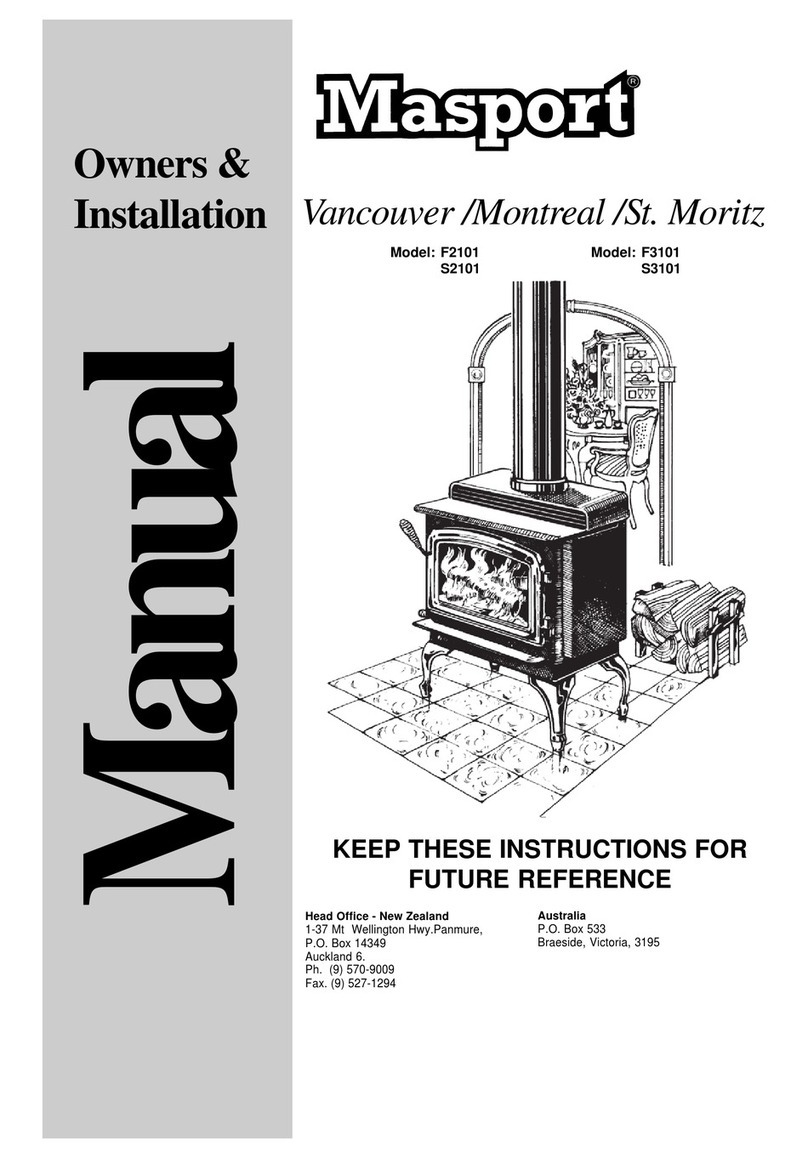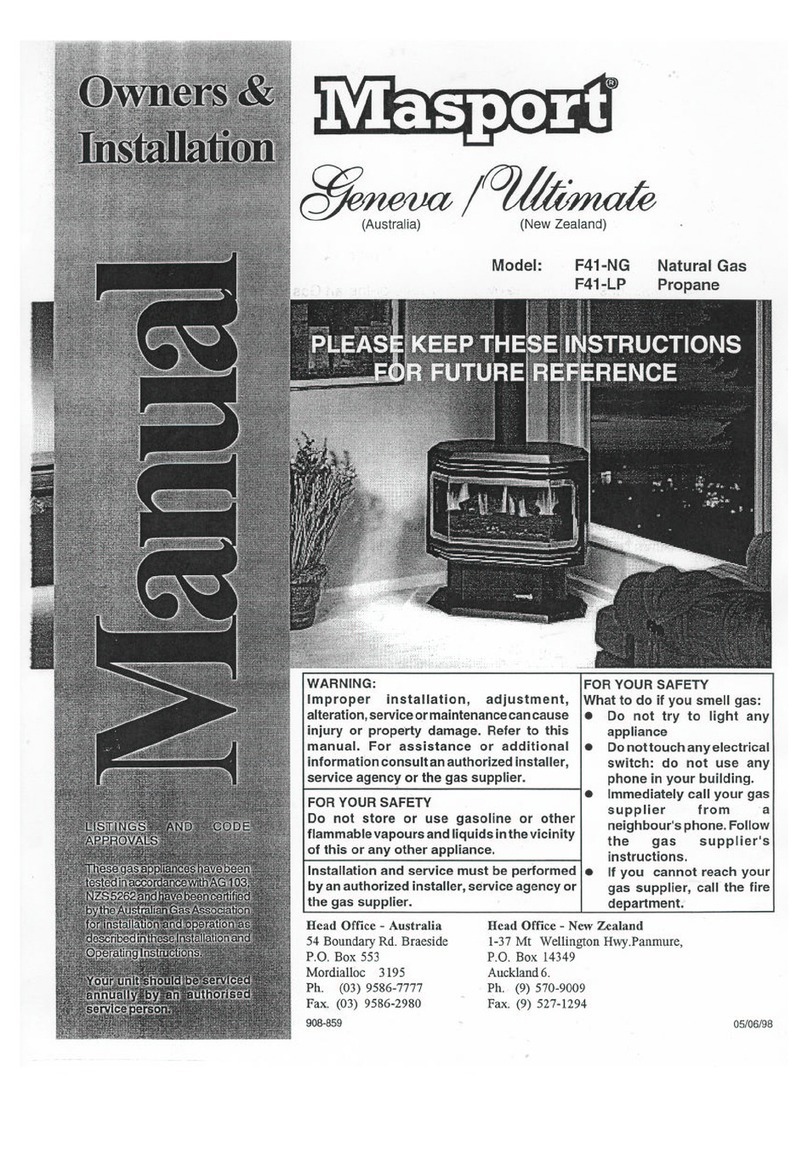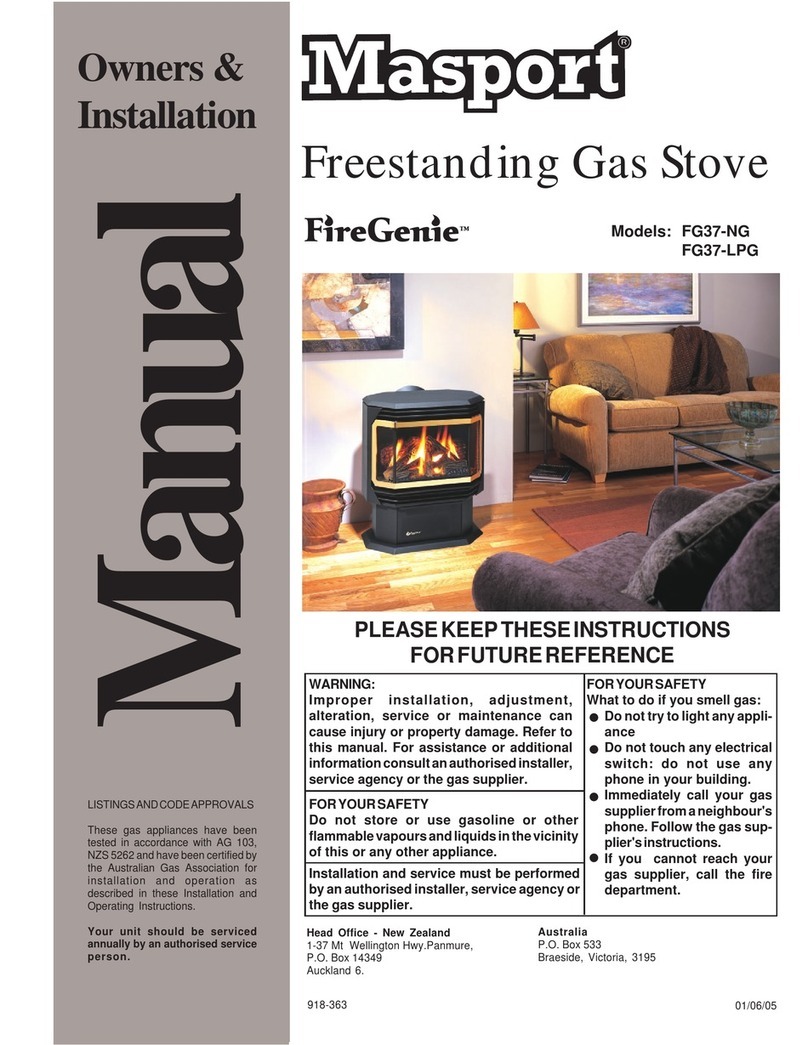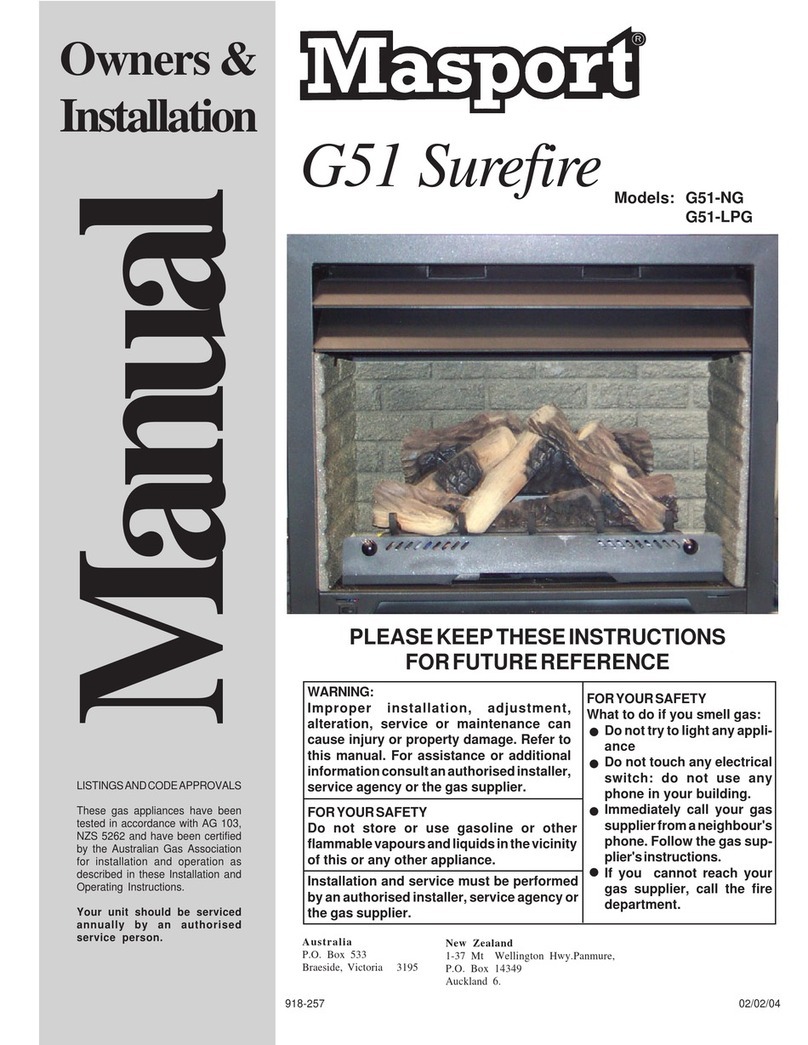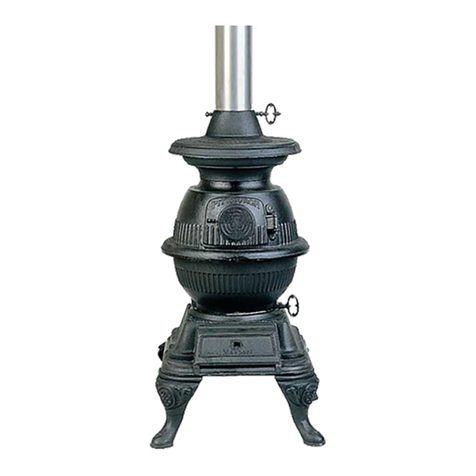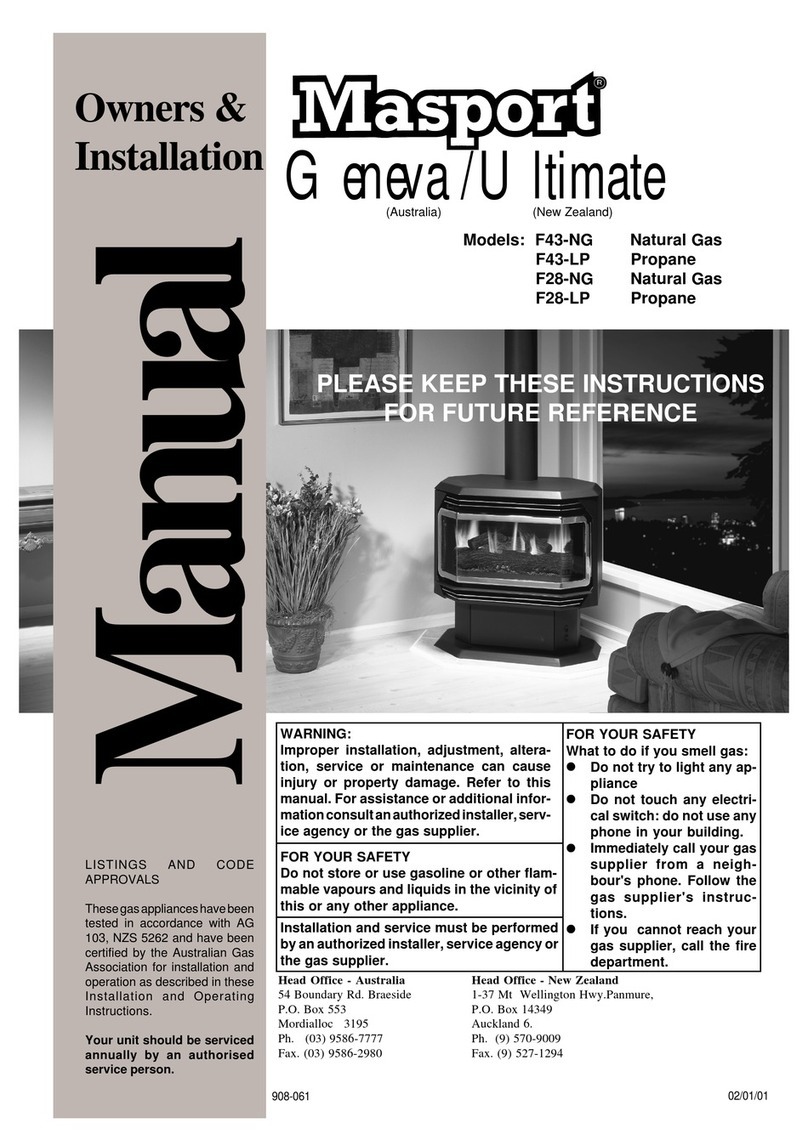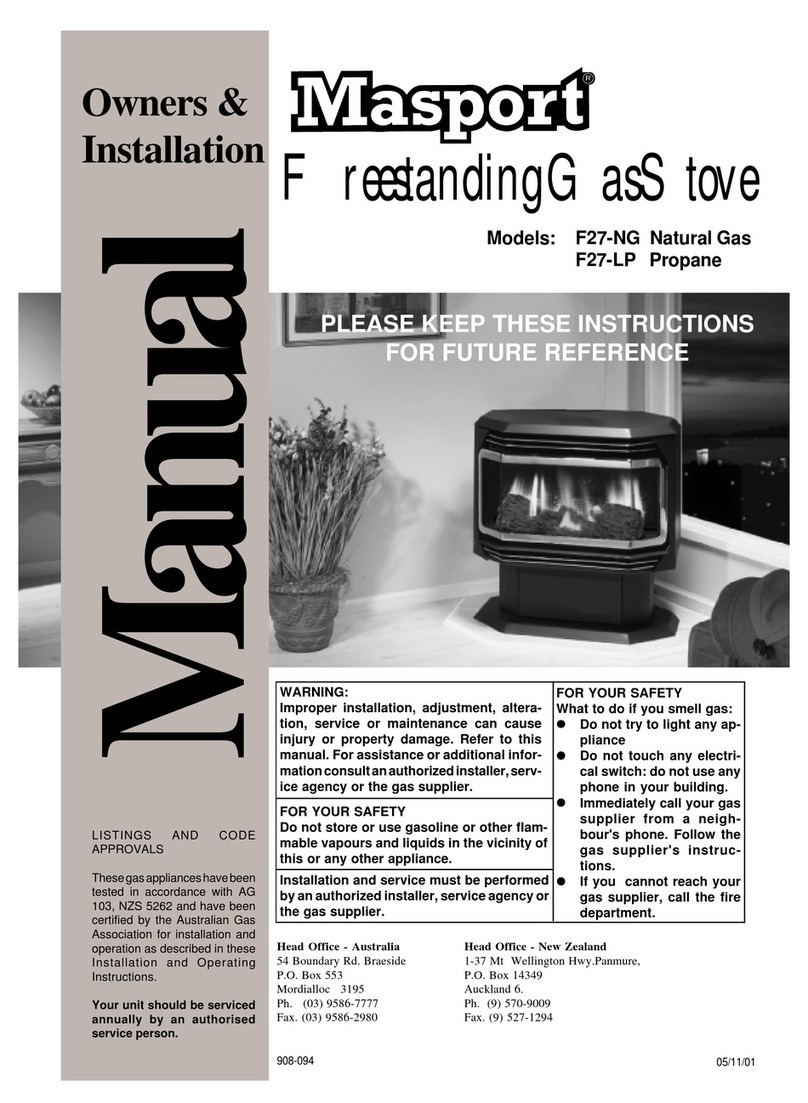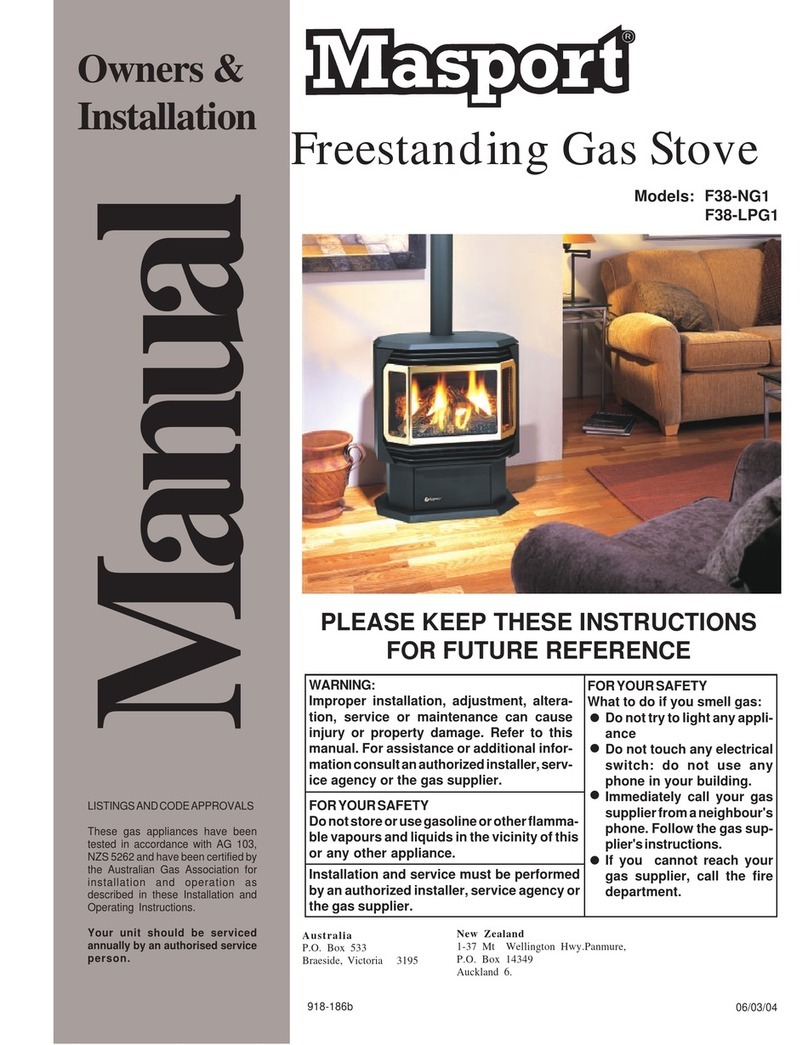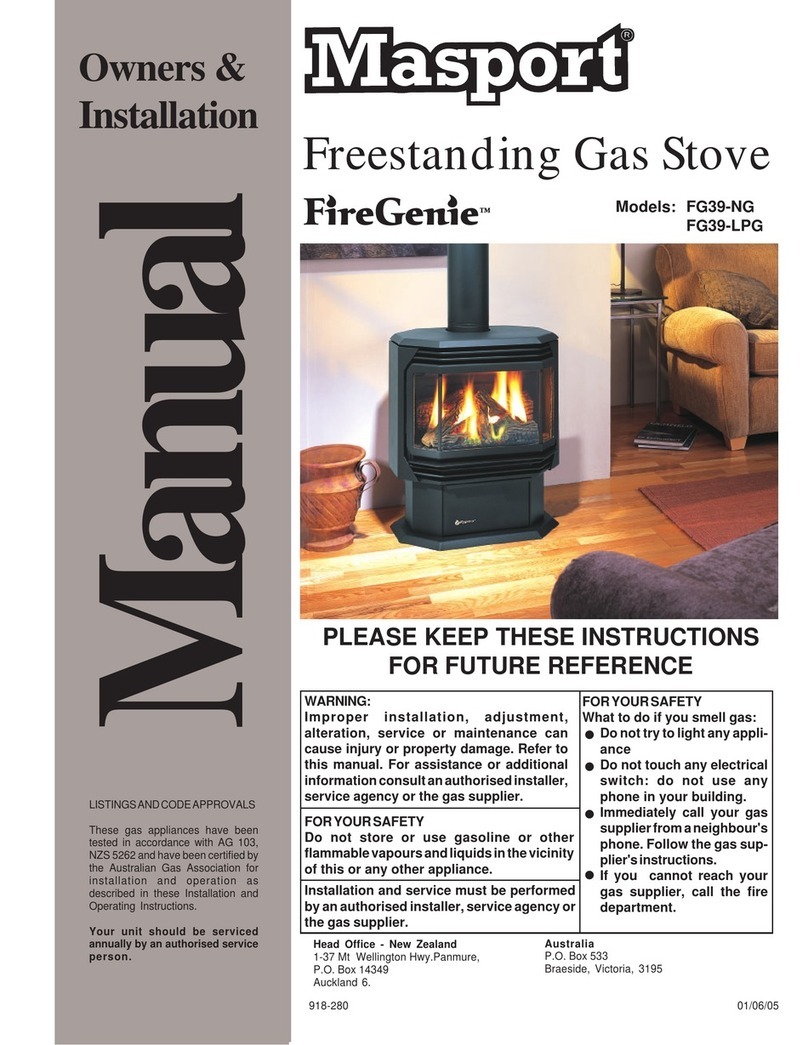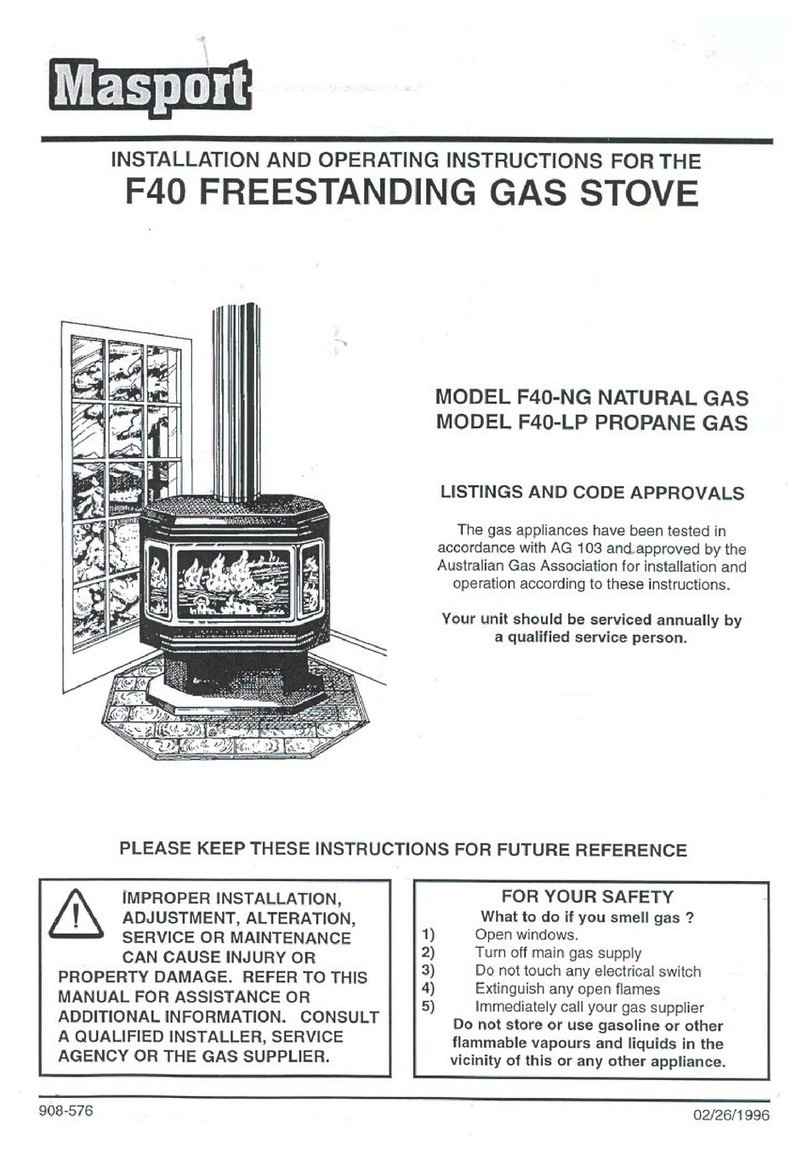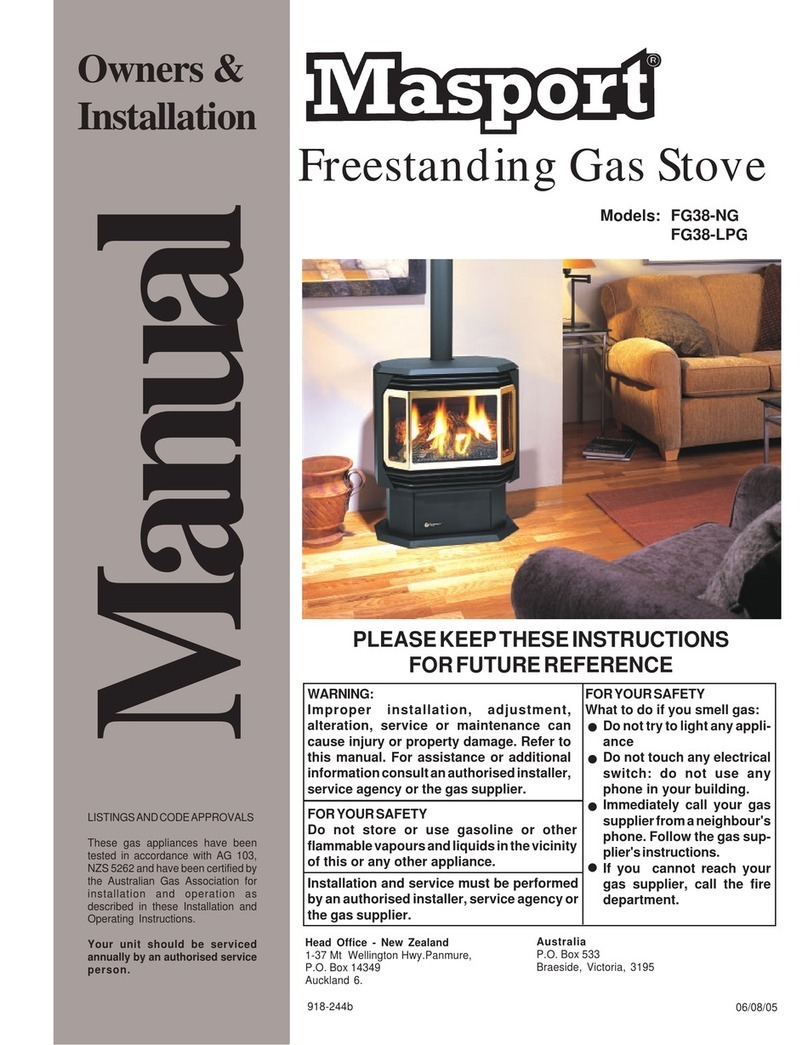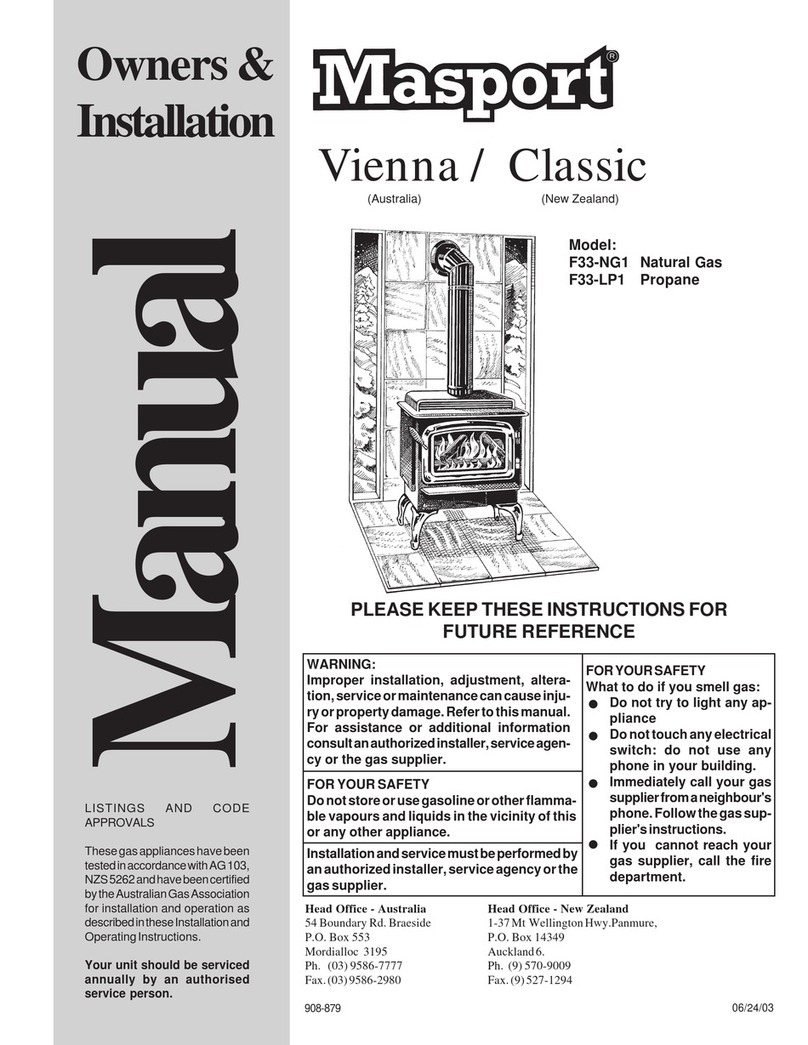
- 4 -
Floor Protection & Installation Clearances
Please refer to the specific ‘Installation Specifications’ for the stove
concerned supplied with the stove.
Flue Connection
You MUST use a flue system, which complies with the current
installation Standard AS/NZS 2918.
Full instructions are supplied with the flue kit, and these MUST be
followed closely, including the minimum flue exit height from the
top of the floor protector and the minimum exit height above the
roofline or roof ridge as detailed in the instructions.
Other Flue Systems
Flues and flue heat shields other than those listed on the Installation
Specification Sheets may be used, but if they have not been tested
with these heaters, their installation clearances will be those
specified in AS/NZS 2918:2001 for untested flue installations.
Unless otherwise specified, all heat sensitive wall material must
be kept at least 600mm away from any flue, which is not fitted
with a flue heat shield.
Always seal the flue to the flue socket of the firebox using firebox
cement or fiberglass rope.
Connect the flue pipe to the stove making sure that it fits snugly
into the base of the flue collar (Fig.5). Seal the collar and flue
connection with fire cement or with other suitable high temperature
sealant. Add flue sections as required; note that all flue sockets
must face upwards.
Avoid using bends greater than 45° to the vertical. All flue pipes
should be as close to vertical where possible. For rear flue
connection the length of the horizontal run of the flue pipe should
not exceed 150mm.
This product should not be installed on a shared flue.
Commissioning
Upon completion of installation, the stove and flue system should
be tested by a suitably qualified person to make sure it is safe for
normal use. A smoke draw test should be completed to check for
soundness of joints and seals and also that all smoke and fumes
are taken from the appliance up the chimney and emitted safely.
First warm the flue with a blowlamp or similar for about 10 minutes.
Place a lit smoke pellet on the centre of the grate with the air
controls open. Close the door – the smoke should be drawn up the
flue and be seen to exit from the flue terminal. Complete the test
with all windows and doors shut in the room where the appliance
is fitted. If a ceiling fan is present it must be operated on max for
the duration of the test. If there are any extraction fans in adjacent
rooms these too must be operated on maximum setting during the
test with the interconnecting doors open. If any spillage occurs,
recheck the suitability of the flue system making sure there is
adequate air supply to the room (as per Building Regulations).
Light the appliance and slowly increase the temperature to
operating levels. Open the main fire door when the appliance
reaches normal operating condition and carry out a spillage test
using a smoke match or pellet around the door opening. If any
spillage occurs, open all windows, allow the fire to go out and
recheck the flue system and ventilation.
Operating Instructions
Warning: The door and operating handles become hot when
the stove is in use. For your safety use the glove provided.
Initial Firing of Stove
We recommend that you have two to three small fires before you
operate your stove to maximum heat output. This is to allow the
paint to cure and the castings to relax and consolidate location.
We recommend this ‘running in’ procedure after long idle periods
to preserve the life of the stove. During this you may notice an
unpleasant smell. It is not toxic but for your own sake we would
suggest that during this period you leave all doors and windows
open.
Air Controls
Primary air is controlled via the sliding vents (A - Fig 6) in the
bottom of the door; this provides a conventional air draught to the
bed of the fire. (+) indicates more air, (-) indicates less air, (+) and
(-) are marked on the primary and secondary air controls.
Secondary air is controlled via the sliding vent (B - Fig 6) above
the door. It is this ‘Airwash’ that keeps a clean and uninterrupted
view of the fire, also aiding in good secondary combustion of fuel
and reducing emissions into the chimney and environment.
The Westcott 3000 is fitted with a tertiary (third) air inlet system. Air
is bled into the stove from the rear panel via an air duct over the
rear brick. Its function is to ignite unburned gasses and assist clean
burning. It is advisable to clear the holes in the duct occasionally
when the stove is being serviced or after long periods of burning
(dirty) fuel, i.e. bitumas coal. For safety this should only be done
when the stove is cold.
The tertiary air supply is permanently open and only allows a small
fixed amound of air into the stove. However if you suffer from poor
flue draft or regularly use smokeless fuel it may beneficial to close
off the tertiary air supply. To close tertiary air, wait until stove is
cool, remove the heat shield cover (A - Fig 3), fit the screw plugs
supplied into 2 holes on rear of stove (X - Fig 3) and replace heat
shield cover.
Lighting the Stove
Place fire lighters or paper and kindling on the grate. Light the
fire at base leaving all air controls open. Allow the fuel to reach
a steady glow and build the fire up gradually. Once you have a
good fire established across the grate bed, further fuel can be
added as required.
Running the Stove
When your fuel is well alight you can start to restrict the primary
air intake. If you are only burning wood the primary air control can
be fully closed. If you are burning solid fuel you will require more
primary air. Your stove is burning with maximum efficiency when
a bright fire is achieved using minimum air inlet.
The stove can be banked up for long periods. When burning solid
fuel empty the ash pan. Open air controls and let the fire burn
brightly for a short period. Refuel and close air controls; the exact
setting required will depend on the fuel used and the chimney draw
so some practice may be necessary. To revive the fire, open air
controls until the fire is burning brightly, de-ash if necessary and
refuel. Set air controls as required. The stove is not suitable for
overnight burning.
